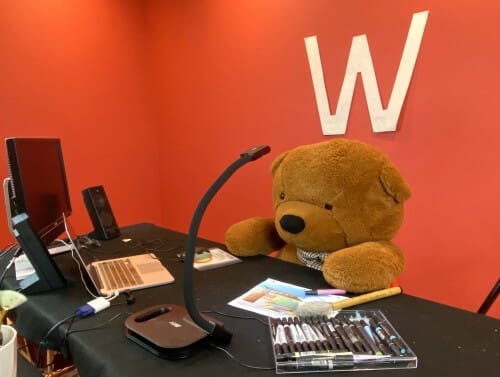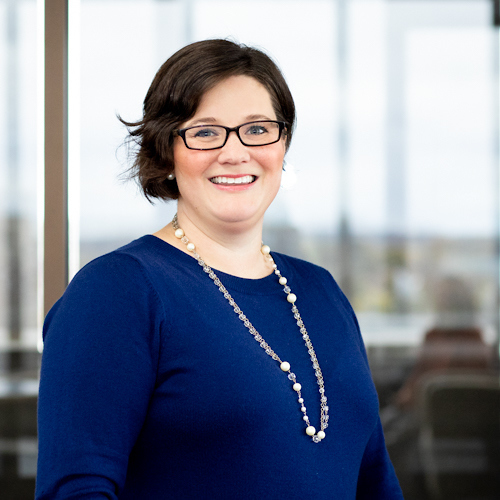In virtual classrooms, UW–Madison instructors find meaningful ways to connect with students
MADISON — On the final day of remote classes last fall, students in one of Assistant Professor Mou Banerjee’s history courses surprised her with a gesture that nearly brought her to tears.
One by one, the students held up homemade posters in front of their computer cameras, revealing a series of heartfelt thank-you messages.
“We could all feel how much Professor Banerjee was giving to us every single day in class, and we wanted to give something back to her,” says freshman Ellie Asher, a student in the class.
The gesture was one small reflection of how UW–Madison instructors are making strong connections virtually with their students — and the appreciation students feel in return.
Ever since the COVID-19 pandemic forced many courses online last year, UW–Madison instructors have been investing great thought and effort into making their virtual classrooms engaging and inclusive. A campus project is now collecting some of those stories, including Banerjee’s. The project provides a forum for instructors to share what has worked for them while spotlighting some of the hard work undertaken by faculty members during a challenging time.
“While we look forward to the end of the global pandemic, it has forced us to rethink how we work with our students,” says Steve Cramer, vice provost for instructional continuity and academic affairs. “As difficult as this time has been for everyone, I truly believe most instructors will come out of this time as better and more effective teachers.”
A strong foundation

Many of Mou Banerjee’s usual teaching approaches took on greater urgency and import online, she says. Submitted photo
Banerjee approached virtual teaching like an architect, employing multiple building blocks to create a strong foundation for her students.
This was especially important in her course last fall titled “Gandhi, King, Mandela: Non-Violence in the World.” The course was part of a First-Year Interest Group, or FIG. These are clusters of (usually) three UW courses, linked together to explore a common theme, and offered to incoming freshmen who attend the classes together as a cohort.
“They were all freshmen in their first semester, confronted with the unimaginable stress of attending college virtually during a pandemic,” says Banerjee, an assistant professor of history.
Many of Banerjee’s usual teaching approaches took on greater urgency and import online, she says. That included requiring every student to meet with her (virtually) before the third week of class.
“The compulsory meetings broke the ice,” Banerjee says. “I made sure students knew that they could come to me, arrange meetings, or stay behind in class to ask questions, and I would do my best to help them.”
Read more about the approaches Banerjee took here.
Asher, who helped organize the surprise thank-you posters, says Banerjee built a strong sense of community in the class.
“A lot of times we put the emphasis on how hard it is for students to learn virtually,” Asher says. “But it’s also hard for professors to go into an online class every single day. Professor Banerjee did a terrific job.”
A wall of Badger red

Wei Dong turned his basement into a teaching studio that mimicked the physical environment of a classroom. Submitted photo
Wei Dong wanted his students to feel at home in his virtual classroom, so he turned his basement into a teaching studio that mimicked the physical environment of a classroom as much as possible.
Dong, a professor of design studies at the UW School of Human Ecology, painted a wall Badger red, installed studio lighting, and added a giant “W” as a backdrop. For the feeling of a live lecture, he placed multiple cameras in his studio so that he could change angles and demonstrate techniques. He varied his vocal tone and employed a variety of delivery methods to achieve what he calls “a multisensory experience.”
Jason Kwan, a UW–Madison associate professor of pharmacy, plunged himself into learning basic animation skills so that he could convey complicated concepts visually. Linn Posey-Maddox, an associate professor of educational policy studies, tailored student surveys to the unique challenges of pandemic learning. That allowed her to fully understand and address the needs of those in her virtual classrooms.
Associate Professor Betsy Stovall connected with her math students through a hybrid approach to office hours, while Megan McDermott, a lecturer at the University of Wisconsin Law School, boosted class participation by developing a detailed point system that encouraged and valued many forms of input and engagement.
Meaningful content
Laurie Brachman, who teaches a marketing management course at the UW School of Business, had special challenges to overcome as she moved everything online. The class she teaches is among the largest on campus — 763 students last fall, more than 800 this spring.
Not surprisingly, Brachman approached the challenge like a marketer.
“I needed to think about my target audience,” she says. “What are these students going through and how can I deliver content that reaches them in a meaningful way?”
In her online lectures, Brachman incorporates slides, photos, video clips and simple animation, striving to constantly freshen the content by drawing from popular culture and whatever happens to be part of the societal conversation. “One of the surprising things about the fall semester,” Brachman says, “was that students continued to reach out to my virtual office hours for career advice at rates that were as good as, if not better than, ‘live’ office hours. I was concerned that I would lose that interaction, given that all of my lectures were asynchronous and online, but happily, that did not happen. I had some really great conversations about the field of marketing!”
Multitude of options

Rosemary Russ saw the change to online learning as a way to disrupt how teaching and learning are done at the university level.
Rosemary Russ, an associate professor of science education at the UW School of Education, saw the change to online teaching as an opportunity not just to recreate what she had done in face-to-face instruction but to disrupt the way teaching and learning are done at the university level.
Specifically, Russ wanted to challenge the idea that academic writing is the only — or even the best — way to demonstrate knowledge. In the process, Russ says she was able to see much richer student learning than she had in the past.
For every major assignment, rather than writing structured papers, students were encouraged to share their learning in ways that resonated with them.
Student Deasy Hartenberger, who is earning a bachelor’s degree in early childhood education, embraced the idea. For her final class project, she created a video of her 7-year-old daughter exploring science in ways that took theoretical constructs from the course readings and made them tangible and visible.
Hartenberger says the approach pushed her creatively while allowing her to lean into the situation she found herself in due to the pandemic — a parent taking remote classes from her home an hour from campus. She praises Russ for encouraging students to bring their full selves to the class.
“She took into consideration the specific needs of each student and how COVID-19 was affecting us in different ways,” Hartenberger says. “She was able to bring out the best in each of us.”
Additional instructor stories are being added regularly as part of UW–Madison’s Instructional Continuity initiative. The initiative is a response to COVID-19 and is being coordinated by the Office of the Provost. If you have a suggestion for an instructor to feature, please contact us at instructionalcontinuity@provost.wisc.edu.
The College of Letters & Science also is taking a look at how professors and students are adapting to teaching and learning during the global coronavirus pandemic. Its series can be found here.
Tags: faculty and staff, history, online education, provost




